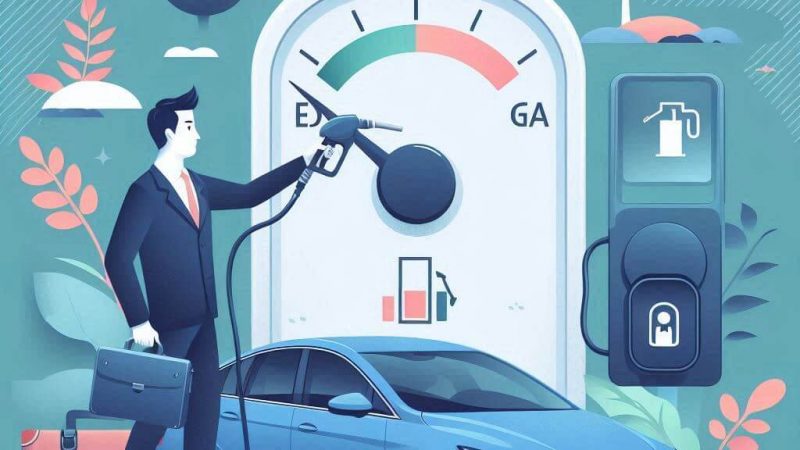How to Safely Navigate Roundabouts and Intersections

Navigating roundabouts and intersections can often be a source of confusion and anxiety for drivers. These critical points in the roadway require careful attention and adherence to specific rules to ensure safety for all road users. Whether you’re dealing with a roundabout in a bustling city or an intersection in a quiet suburb, understanding the proper procedures can help you avoid accidents and make your driving experience smoother. This comprehensive guide provides essential tips and best practices for safely navigating roundabouts and intersections.
Contents
1. Understanding Roundabouts
What is a Roundabout?
A roundabout is a circular intersection where traffic flows in one direction around a central island. Roundabouts are designed to improve traffic flow and reduce the likelihood of high-speed collisions. They typically feature a yield sign at each entry point and often include pedestrian crossings and bicycle lanes.
Approaching a Roundabout
- Slow Down: As you approach a roundabout, reduce your speed and be prepared to yield. The design of roundabouts is intended to slow down traffic, so enter at a controlled pace.
- Observe Signage and Markings: Pay attention to road signs and markings that indicate the correct lane to use based on your intended exit. Some roundabouts have multiple lanes, each designated for different directions.
Yielding and Entering
- Yield to Traffic: Yield to traffic already circulating in the roundabout. Vehicles within the roundabout have the right of way.
- Enter When Safe: Once you’ve assessed the flow of traffic and it’s safe to enter, proceed into the roundabout. Do not stop unless absolutely necessary.
- Follow the Lane: Stay in your designated lane and follow the flow of traffic. Do not change lanes while inside the roundabout.
- Use Turn Signals: Signal your intentions when exiting the roundabout. This helps other drivers and pedestrians anticipate your movements.
Exiting the Roundabout
- Check for Pedestrians and Cyclists: Before exiting, ensure there are no pedestrians or cyclists crossing the exit. Be aware of their presence and give them the right of way if necessary.
- Exit Smoothly: Exit the roundabout at your designated point, maintaining a steady speed. Avoid sudden turns or lane changes.
2. Mastering Intersections
Types of Intersections
Intersections can vary widely in design, including:
- Crossroads: Where two roads intersect at right angles.
- T-Junctions: Where one road meets another at a T-shape.
- Y-Junctions: Where one road splits into two.
- Four-Way Stops: Where all directions are controlled by stop signs.
- Traffic Signal Intersections: Where traffic is controlled by traffic lights.
Approaching Intersections
- Reduce Speed: As you approach an intersection, reduce your speed and be prepared to stop or yield.
- Observe Traffic Signs and Signals: Pay close attention to any traffic signs, signals, or road markings. Follow their instructions to determine the right of way and your required actions.
Dealing with Stop Signs
- Come to a Complete Stop: At a stop sign, come to a complete stop before the intersection. Check for any oncoming traffic or pedestrians before proceeding.
- Yield to Cross Traffic: If you’re at a stop sign and there’s no marked stop line, yield to any vehicles or pedestrians that may be crossing your path.
Handling Traffic Lights
- Green Light: Proceed through the intersection when the light turns green, but ensure the intersection is clear of vehicles or pedestrians before moving.
- Yellow Light: Prepare to stop when the light turns yellow, unless you’re too close to the intersection to stop safely. If you’re already in the intersection when the light changes, continue through cautiously.
- Red Light: Come to a complete stop at the red light and wait until it turns green. Be aware of any permitted right turns on red, but make sure to check for pedestrians and other vehicles.
Turning at Intersections
- Right Turns: Signal well in advance, check for pedestrians, cyclists, and other vehicles before making the turn. Ensure you’re in the correct lane before making the turn.
- Left Turns: Signal in advance, yield to oncoming traffic and pedestrians, and ensure it’s safe before turning. In some cases, you may need to yield to traffic already in the intersection.
3. Special Considerations
Handling Multiple Lanes
- Stay in Your Lane: When navigating through an intersection or roundabout with multiple lanes, stay in your designated lane. Avoid switching lanes abruptly and be aware of surrounding traffic.
- Lane Changes: If you need to change lanes, signal your intention and ensure it’s safe to do so before making the maneuver.
Dealing with Pedestrians and Cyclists
- Always Yield to Pedestrians: Pedestrians have the right of way at crosswalks and intersections. Be vigilant and ready to stop for pedestrians crossing your path.
- Watch for Cyclists: Cyclists may use dedicated bike lanes or share the roadway. Be aware of their presence, especially when turning or entering an intersection.
- Roundabouts with Multiple Exits: In complex roundabouts, use your lane and signals correctly to ensure you take the right exit. Follow posted signs and lane markings.
- Intersections with Multiple Turn Lanes: When multiple turn lanes are present, choose the appropriate lane for your intended direction. Follow lane markings and signals to ensure safe and orderly movement.
Stay Focused
- Avoid Distractions: Keep your attention on the road and avoid using your phone or engaging in other distractions while approaching and navigating intersections or roundabouts.
Practice Defensive Driving
- Be Prepared for the Unexpected: Other drivers may not always follow the rules perfectly. Be prepared to react safely if another driver makes an unexpected move.
Use Technology Wisely
- Navigation Systems: Use GPS navigation systems to help plan your route and provide real-time updates about upcoming intersections and roundabouts.
Educate Yourself
- Know the Rules: Familiarize yourself with local traffic laws and regulations regarding roundabouts and intersections. Understanding the rules can help you navigate more confidently and safely.
Navigating roundabouts and intersections can initially seem challenging, but with the right knowledge and approach, you can master these essential driving skills. By following the tips outlined in this guide—such as adopting smooth driving habits, understanding the rules of the road, and staying alert—you can enhance your safety and the safety of others on the road. Practice these techniques regularly, and you’ll become more comfortable and confident in handling roundabouts and intersections, leading to a safer driving experience for everyone.


